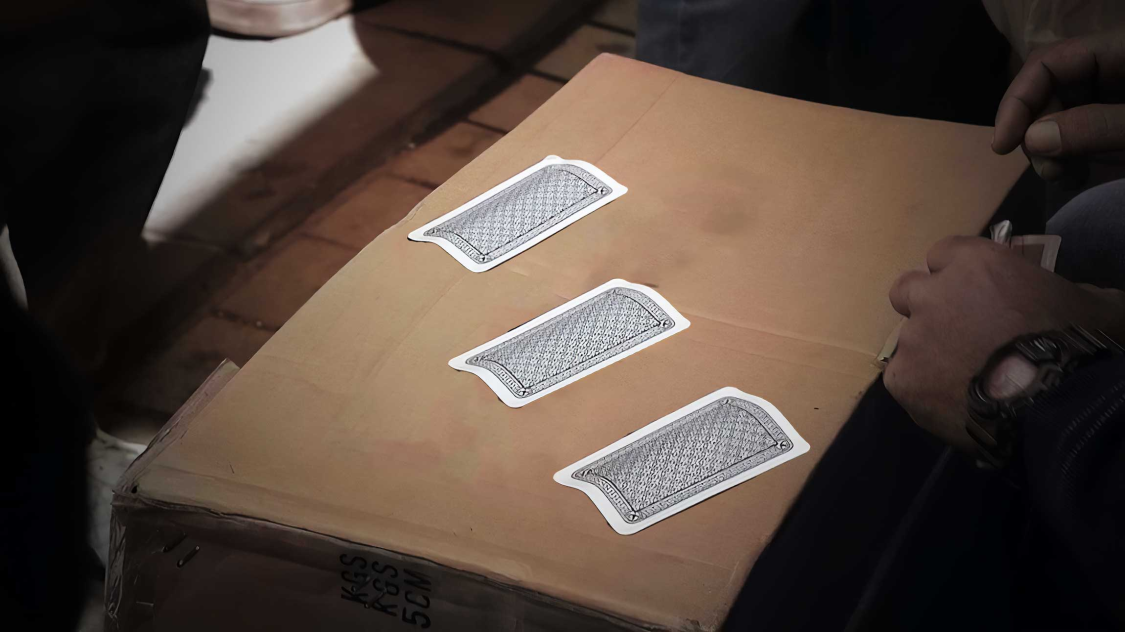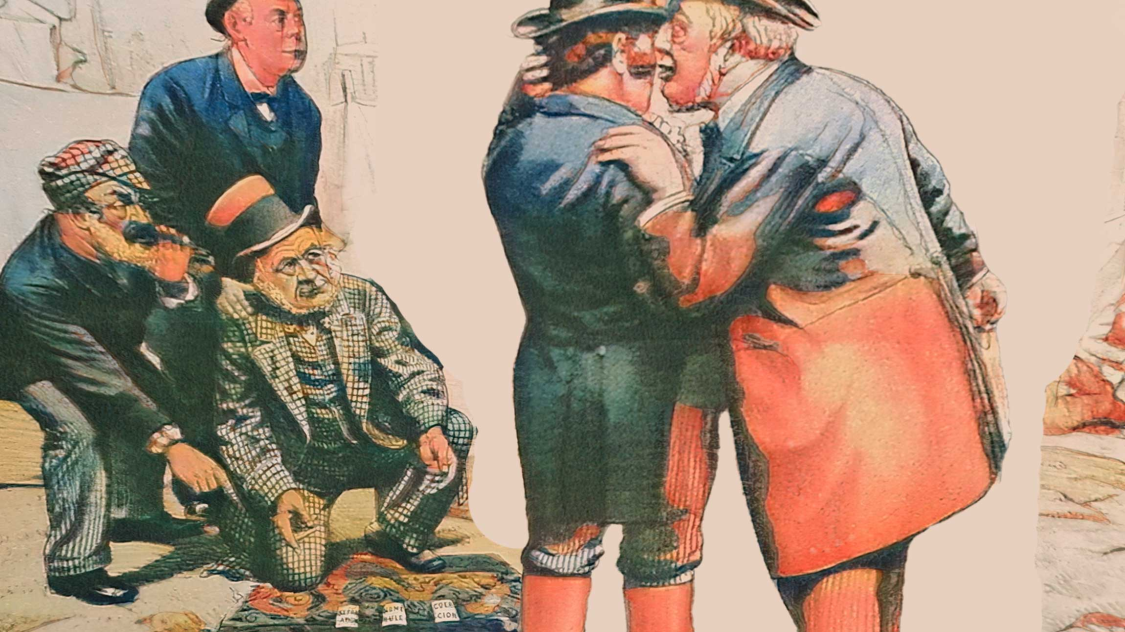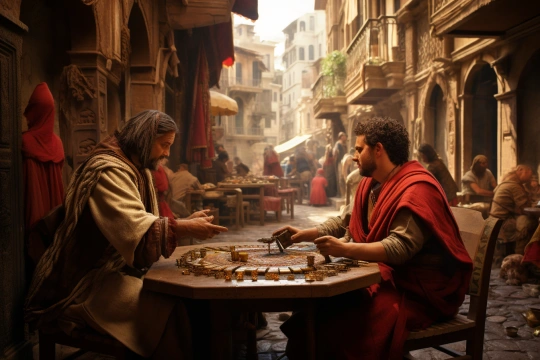The Origins of Three-card Monte
Three-card Monte, also known as "Find the Lady" or "Three-card Trick", has roots that stretch back into antiquity. This deceptive game of chance first emerged in Europe in the 15th century and quickly spread across the continent. However, its origins can be traced even further back to ancient Egypt, where similar games were popular among the populace.
At the heart of Three-card Monte is deception. In many instances, the game was used as a means for swindlers to enrich themselves at the expense of unaware or trusting individuals. Using cunning tricks and manipulation, swindlers made their "marks" believe they knew where the required card was located, while in reality, the odds of success were minimal.
The game's name, "Three-card Monte", originates from the Spanish word "monte", meaning "mountain". In the context of the game, this refers to the three cards that swindlers lay out in front of the player. Over time, the game crossed the Atlantic and became popular on the streets of North America, where swindlers used it to deceive passers-by.
Today, Three-card Monte remains a symbol of street deception, but it can also be found in some casinos and online platforms. This testifies to the fact that despite the game's deceptive nature, people continue to be drawn to the unique combination of luck, deception, and psychological play that Three-card Monte offers.
Understanding the Game: The Intricacies of Three-Card Monte
Commonly referred to as "Follow the Lady," Three-Card Monte is an engaging blend of luck and subterfuge. But what does this popular gambling game entail?
The fundamental premise of the game is straightforward. It involves two players: the dealer and the bettor. The dealer shuffles three cards, typically two black ones and one red (frequently a queen), and places them face down. The player's primary objective is to keep track of the queen as the dealer adeptly mixes the cards to disorient the player.
Once the dealer stops shuffling, the player makes a bet and selects the card he assumes to be the queen. If his selection is accurate, he walks away with the winnings. If not, he suffers a loss.
Despite its apparent simplicity, Three-Card Monte is a game that demands keen observation and swift reaction. Dealers employ various tactics to divert attention and induce an erroneous choice. These tactics may involve swift and confusing hand movements or psychological manipulation. It's crucial to remember that the chances of winning this game always favor the dealer, and most individuals who engage in Three-Card Monte invariably incur losses.
Deceptive Practices and Tactics: The Craft of Misdirection
Scam artists running the game utilize a variety of tactics and techniques to ensure the odds of winning consistently favor them. Let's delve into some of these techniques in more detail.

Mastery of Misdirection
One of the most prevalent tactics employed by scam artists is the artful use of swift and dexterous hand movements. They shuffle the cards with such speed and skill that keeping track of them becomes practically impossible. This method is often combined with other forms of distraction to make the task of following the target card even more arduous.
Psychological Manipulation
Scam artists frequently resort to psychological manipulation to sway the attention and decisions of players. They may pose as novices or commit deliberate "errors" to present the player with an illusion of having an upper hand. For instance, they might "inadvertently" reveal the location of the target card or allow the player to win a few preliminary rounds.
Planting Allies in the Crowd

Another typical technique involves the use of "plants" or allies among the spectators. These individuals pretend to be random observers who partake in the game and often "win," demonstrating to others that victory in the game is attainable. This strategy entices others to participate and, more often than not, suffer losses.
Card Switching
Some scam artists might even resort to a card-switching technique. During the shuffling process, they quickly and stealthily replace the target card with another. Consequently, even if the player had been accurately following the target card, they would still lose as the card has been switched.
In summary, it's crucial to bear in mind that, despite all these maneuvers and techniques, the game is typically rigged to favor the scam artist. Therefore, even if you are well-versed in all the strategies and deceptive methods, the most certain way to win this game is by choosing not to participate at all.## The Psychology of Deception in Three-Card Monte: Why Do We Play When the Odds Are Against Us?
In today's world, when information is literally at our fingertips, it seems incredible that people still believe in "easy money" and fall for swindlers' tricks. However, the psychology of deception in the game of Three-Card Monte is deeper and more complex than it might appear at first glance.
Illusion of Control
One of the key components of deception psychology is the illusion of control. This is the feeling that we can influence the outcome of events that are actually random and unpredictable. In the game of Three-Card Monte, this illusion is amplified by the fast pace of the game and the confidence instilled by the swindler.
Tendency to Believe
This is a psychological phenomenon where people are inclined to believe information that confirms their existing beliefs or prejudices. If a player already believes in their luck or abilities, they will be more inclined to play Three-Card Monte, even if circumstances suggest otherwise.
The Illusion of Success - A Different Perspective on Survivorship Bias
We frequently encounter narratives of individuals who have emerged victorious in the game of Three-Card Monte. This engenders a phenomenon known as survivorship bias, wherein we concentrate on the extraordinary tales of success, while overlooking the instances of defeat. This skewed perception can inflate a player's belief in their probability of winning.
The Three-Card Monte Phenomenon: A Comparative Analysis with Other Games
Within the multifaceted realm of gambling and games of chance, Three-Card Monte carves out its distinct niche. It diverges from various other games, such as poker, blackjack, or roulette, for several reasons.
The Appeal of Quick Play and Easy Rules
Contrary to poker or blackjack, which demand strategic cognition and a complex understanding of the rules, Three-Card Monte is a game that is simple to comprehend and participate in. This renders it a perfect choice for casual gamers or those who wish to try their hand at fortune swiftly.
An Engaging Experience
In contrast to roulette, where the ball lands on a number by chance, Three-Card Monte incorporates an element of interaction. Players observe the card movements and make a decision, adding a dynamic and immersive dimension to the game.
The Art of Trickery
While most casino games operate on fair play principles, where the house invariably holds an edge, Three-Card Monte is frequently linked with deceit. Tricksters employ a plethora of deceptive stratagems to assure their victory, making the game exceedingly challenging to conquer.
The Element of Surprise
Unlike games of dice or slot machines, where results are grounded in randomness, Three-Card Monte presents a greater degree of unpredictability. This arises from the fact that the outcome depends not merely on chance, but also on the hustler's dexterity in manipulating the cards.
Memorable Moments, Grand Victories, and Celebrity Encounters
Despite its straightforwardness, Three-Card Monte has spawned a myriad of fascinating anecdotes. As per an urban myth, a fortunate player once succeeded in "decoding" the hustler's method and, employing it to his advantage, won a substantial amount of money. This infrequent occurrence became a talking point in many circles, stimulating lively discussions.Celebrities were also fond of this game. The great actor Marlon Brando was known for his passion for Three-Card Monte. He even, according to rumors, trained with professional scammers to perfect his skills. Another example is the famous director Stanley Kubrick, who supposedly used the game as inspiration for some of his famous plot twists.
The game of Three-Card Monte has also left its mark on culture and art. It is embodied in many movies, books, and songs, usually as a symbol of deceit and luck. One of the most famous examples is Martin Scorsese's movie "Raging Bull", where the main character, boxer Jake LaMotta, plays Three-Card Monte on the streets of New York.
The game was particularly popular during the California Gold Rush, where it became a favorite pastime of many gold miners.
The Game in the Modern World
In our time, when digital technologies and virtual reality have become part of everyday life, it would seem that street games should have disappeared. However, the game of Three-Card Monte firmly holds its position.
You can find street hustlers playing this game in big cities around the world, but the process of the game is not limited to the streets. Three-Card Monte has adapted to new realities and moved to the internet.
Today, you can find variations of this game on various online platforms and mobile applications. They allow users to understand how the scam works in a safe environment. However, remember about safety on the internet and that online versions of this game can also be used by fraudsters.
Moreover, virtual reality technology (VR) has not passed by this game. Some companies have developed VR games based on the principles of Three-Card Monte, which allows users to feel the atmosphere of a street game without risking real money.
Conclusion
Three-Card Monte is not just a game. It is a cultural phenomenon that vividly demonstrates both the influence of traditions and the changeability of society. It shows us how ancient forms of entertainment can adapt to the modern world and continue to live in it.
Learning from the history of the game Three-Card Monte is important not only for those who want to unravel its secrets and understand the mechanisms of deceit. This is also a lesson for all of us about how easily we can be deceived and how important it is to be vigilant.
Remember: Three-Card Monte, with its hustlers and victims, serves as a reminder that the world is full of deception and illusions. It reminds us that not always what seems obvious is the truth. And, perhaps most importantly, it shows us that it's not the victory that matters, but the process of the game.
Stay vigilant, be critical, and enjoy the game - because, after all, life itself is a game. And as the saying goes, "It's not about how you fall. It's about how you get up."





